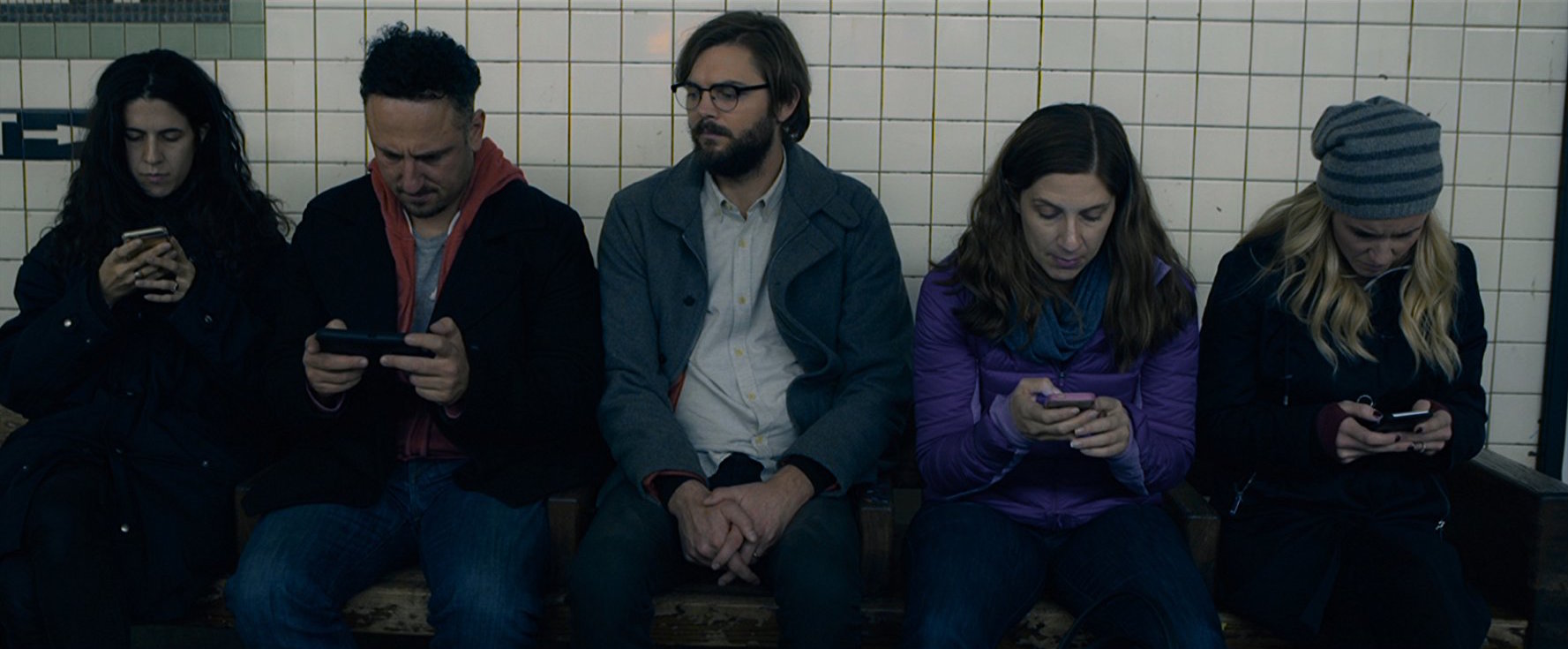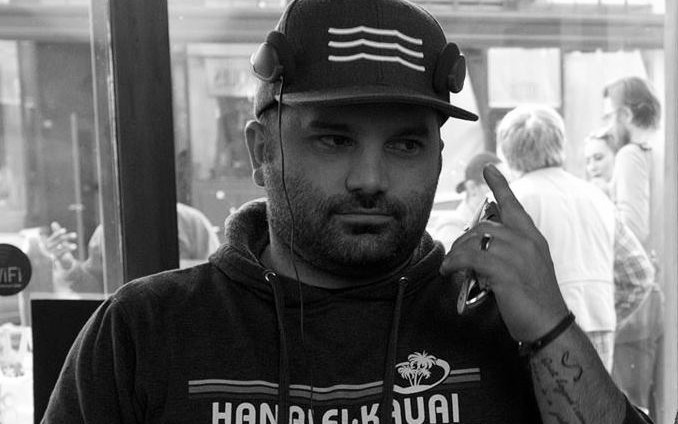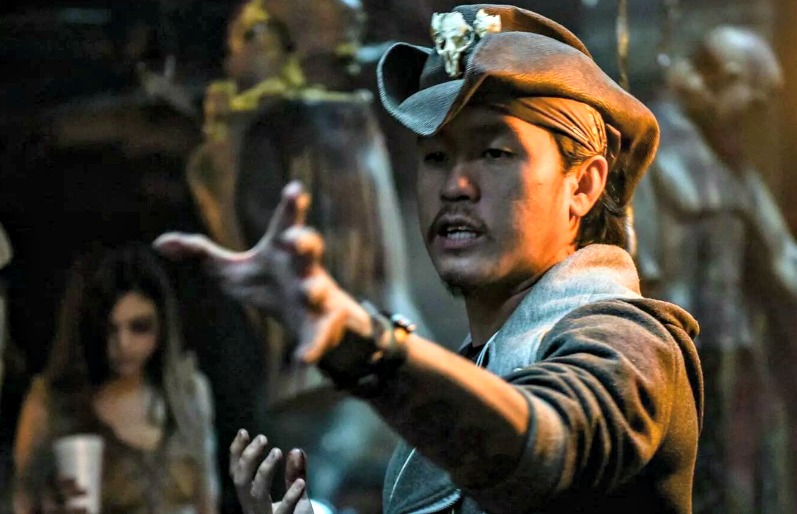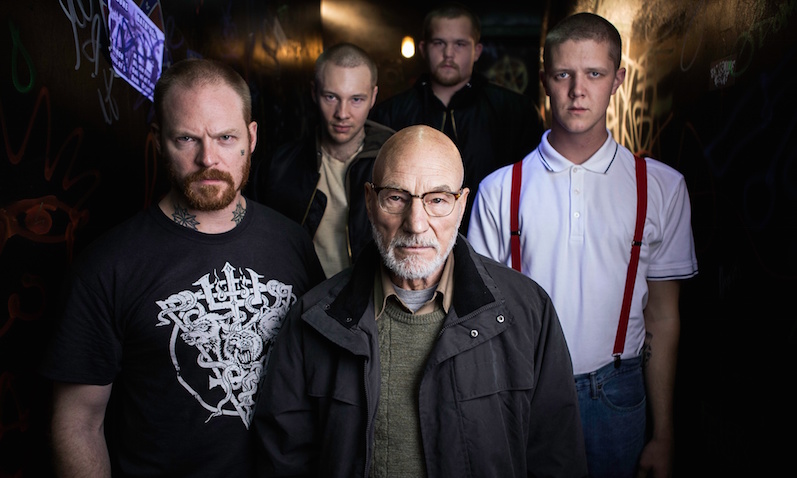SHERWIN SHILATI took a big swing as a first-time filmmaker in 2008 – he made a short comedy called I Kicked Luis Guzman in the Face… and actually got Luis Guzman to star in it. The success of the short film launched Shilati into the world of commercial directing. Commercial gigs led to the web series MERRIme and another short, Neil & John: The Key. Shilati’s career has more recently included TV directing, for the series Lucifer and Riverdale.
Shilati’s first feature film is the new romantic dramedy PEOPLE YOU MAY KNOW, which premiered this year at the San Francisco International Film Festival. The film stars Nick Thune as a graphic designer whose aversion to social media has made him feel further and further isolated in modern day New York. A social media “influencer” (Halston Sage) soon takes him under her digital wing, and they attempt to create a new Insta-famous persona for him. People You May Know co-stars Kaily Smith Westbrook, Nicholas Rutherford, Carly Chaikin, Ian Harding, and Usher (as himself). The Orchard will release the film On Demand and Digital HD on November 28.
We spoke with writer/director Sherwin Shilati about making his first feature, as well as the difference between directing for film and for television.
——
COLIN McCORMACK: How did you come up with the concept for the film?
SHERWIN SHILATI: I was looking to do a feature for a while. [Producers] Kaily Smith Westbrook, Shelley Stevens [and I] all knew that we wanted to do a feature together. That was sort of the next step in our careers, so we were looking for a subject matter that was compelling to us. And the more we drilled down, we realized it was the world of social media and how it makes us feel on a daily basis and our interaction with it. Then a dear friend of mine Michael Mohan, who’s also a writer and director, had written a treatment for a story that he shared with me. It had a great foundation and we really loved it, and then from there I decided to dive in and make it my own and wrote the screenplay. It was really born out of a collective desire to investigate and explore this subject matter. I always knew I wanted to present it in a comedic and yet dramatic way; that’s my style. So that’s the auspices of the idea around it. It really helped [having] Mike’s treatment, and that’s what got the gears turning, and we ran with it from there.
CM: You’ve done a lot of commercial directing. During the writing and development process [of the film], were you also continuing to shoot commercials at the same time?
SS: Yeah, I never really stopped directing spots. I took some time off, clearly, to write the screenplay and to direct the film itself, but then when we got into post I remember having to fly down to Florida to do a commercial for Flow Water. So that kind of never stops, and at the time I had a three-year-old daughter, so you learn how to multitask [laughs].
CM: In the beginning of your career, was the Luis Guzman short your first short film?
SS: Yeah. My first job in the business was on the TV show Lost. I realized after working on Lost that I want to direct and I want to write. That’s something I wanted to put all my time into. I had moved to Hawaii to work on the show and was [producer] Jack Bender’s assistant, and when I moved back to the mainland I was ready to start shooting the old-fashioned style of trying to raise money from friends and family. I knew a producer, Adam Hendricks, who wrote the screenplay for I Kicked Luis Guzman in the Face, and we developed it together and were lucky enough to get the project to Luis and he agreed that he would be in it. Just an incredible, incredible guy who was so generous with his time. That became my first short film as a professional.
CM: So how did an unknown filmmaker get Luis Guzman to agree to do his film?
SS: I was really lucky. I had worked for Jack Bender on Lost. And [I] did the research to find out who Luis Guzman’s agent was and my boss at the time, Jack, knew his agent. Jack had read the script and really liked it, and if you look at the credits he’s an executive producer on the project. He read it and said, “Hey, all I can do is get it to the agent. Whatever happens from there is out of my hands.” And the agent liked it and passed it onto Luis, and Luis really liked it, and the rest is history. So it was just a matter of getting the ability to walk the script in, so to speak, to Luis’s agent. And we were fortunate enough that it resonated with him.
CM: On a similar note, for People You May Know, was Usher’s role written for him? Or was it a different celebrity, or just “Generic Celebrity” that you will cast when you get to that point?
SS: No, I had written it for him actually. I knew that I wanted to find somebody who had a great social media presence, but who also was someone who had a great deal of respect and if he posted things online they would be revered, or at least not seen as unsubstantial. So Usher was always the one. Besides being a big fan of Usher and growing up on his music and all that stuff, I had written it for him. Of course, as any writer [would], you think of Plan B, Okay, insert Generic Celebrity here, but I just like to shoot for the moon, clearly. Like with I Kicked Luis Guzman in the Face, just shoot for the ideal individual and see what happens. We had a lot of hopes, and Usher – once again his manager liked the script and it got passed on to him – he’s passionate about this subject matter too. So it was a great fit and we got lucky.
CM: I wanted to ask about casting the rest of the film, in particular because I’ve heard stories that more and more casting directors are now looking at the social media presence of actors before casting them to see what type of following they could potentially bring to the film. In finding the rest of your cast, was their own social media presence a factor you considered?
SS: I think that attitude comes from advertising as well. I have worked on commercials where the creative team makes a lot of creative decisions based on the social media reaction and behavior of the consumers. With us, it was never that big a part of the decision-making. We just wanted to find the best actors for the roles. Because it’s so indie– with indie moviemaking, it’s very difficult to predict what’s going to happen with a film and the likelihood of whether it’s going to make money or not, et cetera. So our main object was: Let’s find the best actors for the roles and hopefully they bring an audience with them. I don’t really remember– I know we didn’t make any decisions based on [social media following], but if it came up in conversation, it was very likely [discussed]. But at the end of the day, it wasn’t the factor that pushed us to cast anyone.
CM: Did you need to secure permissions and rights from the different social media platforms –
Facebook, Instagram, and Twitter – because they are featured prominently?
SS: Yeah, we worked with clearance lawyers to basically protect the platforms and protect ourselves in the filmmaking process. So we used all that under Fair Use… that’s the way we moved forward with it. Everything is depicted the way it is meant to be depicted in their platforms; nothing was manipulated or anything like that.
CM: As social media has come into play, you see characters less and less in movies talking on the phone. Different filmmakers have different ways of showing text messages and social media [communication]. What made you decide how to show it on screen without getting too technical or [visually] crazy with it?
SS: That’s a great question actually because it may seem very simple, but I promise you it’s not. So much of the story is told through screens, so I agonized over how to do this in a cool, interesting, new way. I told myself, We’re going to redefine the way that we show this information in movies! Because I’ve worked on commercials and things that have expressed that stuff, whether it’s visual effects or just layovers. I’ve also seen it – I think the movie was Sleeping with Other People, which came out a few years ago – where it’s literally a split-screen and actors are reading the text message. So I’ve seen it a lot of different ways. And I stopped myself, I hit the brakes, and I said, “I want to depict this in the way that we are used to reading it. In a way that real human beings interact with it.” It’s present enough now – maybe not five, ten years ago in storytelling and filmmaking – that now it’s all we do. All we do all day long is look at our phones or our laptops. So I thought, Let’s just present it as it is.
Then I really got jazzed about that idea and shot almost everything practically. Almost everything you see was shot on screen. We had an entire half-day where all we did was shoot a computer screen and capture as much of the comments and reactions as we could. I just wanted to feel as real and as authentic as possible at that point. So instead of pushing myself to go the super VFX-heavy direction, where maybe it might actually be a little distracting, I went in the complete opposite direction and used the most basic way of expressing all that information. I was trying to make it as true to the way we experience it in real life every day as possible.
CM: I’m sure there’s still a ton of legwork put into that. For instance, how many social media accounts did you guys have to create and run in order to have the characters’ posts in addition to Likes and Comments and things like that?
SS: Oh, man. There’s a credit called something like “Social Media Coordinator,” for the film. Dani Reimer, that was her responsibility, she just kept track of all that stuff and it was incredible the amount of organization we had to have. Like I said, we wanted to keep it as real and authentic as possible and that was a big part of it. I don’t have a number [of accounts] for you, but it was more than enough work for just one individual as a full-time job. [Laughs]
CM: What films or filmmakers have inspired you, either with this story or with your career in general?
SS: For this one I was really inspired by the film Her. Spike Jonze is one of my heroes. His film Her, to me, was just an awesome, gorgeous, heartwarming and heartbreaking film that tackled isolation and finding something to hang onto. That was a real catalyst for me in jumpstarting the project. And he is a filmmaker that I admire and have always admired and is just incredible. Other filmmakers… David Gordon Green is somebody I really admire. I love the way he can go from doing a George Washington or a Prince Avalanche and then go do Pineapple Express or a bunch of episodes of Vice Principals. When I think of careers that I’d love to emulate, his is one that I absolutely idolize. He’s fantastic.
There haven’t been a lot of social media films that I can think of that tackle the subject matter in the way that we did with this movie. A lot of them are thrillers or horror movies even. There wasn’t too much that I could really draw from that reflected that world. Some of them are super dramatic. Jason Reitman’s movie [Men, Women & Children], which I think is based on a book, with Adam Sandler, that one was very dramatic and dark. Obviously, we wanted to touch on some dramatic points, but we didn’t want that plot and tone to overtake the film. So we kind of had to go out on our own for this one in terms of the tone.

CM: Between doing this feature film, your short films, and your commercial work, does your approach differ in noticeable ways in how you come at each [medium]?
SS: As far as the mediums go – because I’m directing television now too – I think they all have their own approach. Clearly with films you get a bit little longer amount of time to prepare and to actually shoot, but not a lot. Especially with indie features, you’re still shooting seven-, eight-page days, which is similar to television. And even with commercials, sometimes you’re shooting two, three, four commercials in a matter of three or four hours [laughs]. So I was well prepared for the speed of everything because of the commercial business, but I do like the amount thought and time I had just to explore the ideas on a feature in the prep time period. I had a lot of time to think about certain scenes, how I want to do them, have conversations with the cinematographer or the production designer and on and on, and really explore and drill down.
With TV it’s a little bit more like, Okay, what’s your best idea right now? What is the best idea right now, and if you come up with something better in the next six days, hopefully we can achieve it; but if not, well, we’re going with the best idea right now. That speed and prep time is definitely different. With commercials for the most part – unless you are responsible for the generating the campaign creative, which happens from time to time – these creative executives have been working on the concept of the commercial for anywhere between 12 and 18 months. So they’re bringing this product to you and saying, “Take our work and express it in 30 seconds and don’t mess up.” So you definitely have a loyalty and a commitment to that creative team. It feels like its own animal.
With features, from a directing and writing standpoint, you’re on your own island. Television [directing] is much more collaborative, where you’re stepping into a role where the machine is already going and you want to just fit in and subtly slip out without causing any waves, and hopefully bringing something creative to the party. They each have their own thing, but at the heart of it, it just comes down to telling stories. The passion behind the storytelling is universal, regardless of the medium. That’s the one constant that I certainly bring with me.
__
Thanks to Sherwin for talking to us about PEOPLE YOU MAY KNOW. Follow the film on Facebook, Twitter, or Instagram.
If you’re an independent filmmaker or know of an independent film-related topic we should write about, email blogadmin@sagindie.org for consideration.





